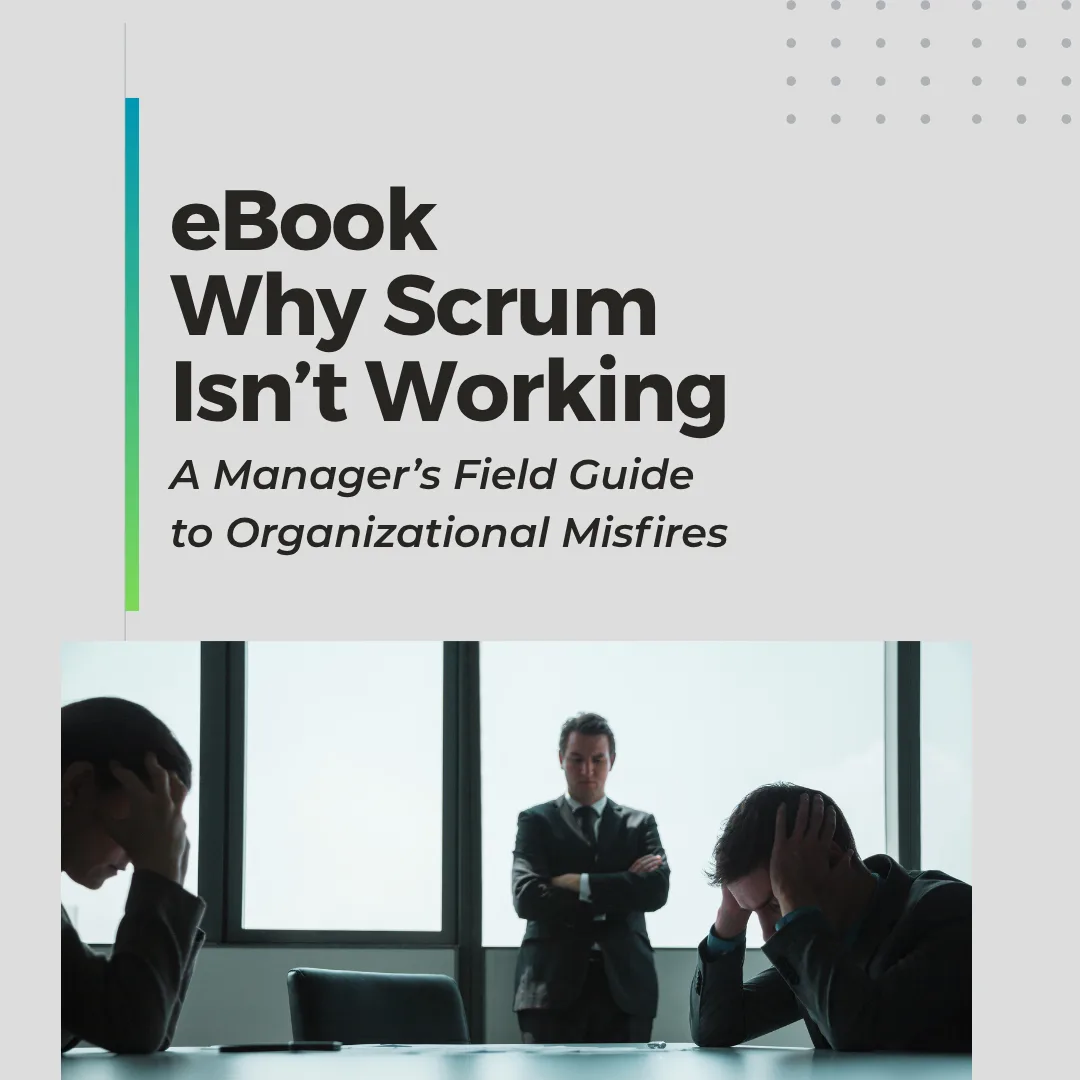In Scrum, there are many references to products: the Product Backlog, Product Goals, the Product Owner. But what exactly is the product? It’s a deceptively simple question that can cause serious problems when misunderstood. A poor product definition can lead to fragmented teams, misaligned goals, and wasted effort. In this blog, we’ll explore what it really means to define a product and why it’s essential for successful Scrum implementation.
The Dangers of Getting Product Definition Wrong
Many organizations fall into the trap of defining products based on technical components instead of customer outcomes. A common example in software development involves treating a database, a backend service, or a front-end interface as separate products. Teams are then formed around these pieces, each with their own Product Goal, Product Owner, Product Backlog, and Definition of Done.
What’s the result? A chaotic mess of misaligned priorities and a broken delivery system. Instead of solving problems for customers, teams become focused on completing technical tasks in isolation. This can turn into a coordination nightmare and force companies to reintroduce project managers just to make sense of all the moving parts—completely undermining the benefits of Scrum.
Think in Terms of Outcomes, Not Tasks
True product thinking starts with outcomes. When elite teams like Navy SEALs are given a mission, they’re not handed a detailed to-do list. They’re given an objective—an outcome—and the autonomy to figure out how to get there. In business, this approach translates to empowering cross-functional teams with a clear goal and the ability to determine the best path to achieving it.
This is the essence of effective product definition: starting with the problem that needs solving, not a pre-defined list of tasks. Task-based thinking keeps teams locked in to a predefined plan that may need to change over time. Outcome-based thinking allows for flexibility, experimentation, and real innovation as you’re working toward a result.
Start With the Problem, Then Define the Product

Scrum defines a product as “a vehicle to deliver value”. Thus, the first thing we need to understand is value. What does our customer value?
If you’re not starting with a clear understanding of the customer problem and the value they need, you’re not defining a product—you’re defining work. Viable product definition requires asking tough questions:
- What problems are our customers facing?
- Are those problems worth solving from a business perspective?
- Do we have evidence (not just feelings) to support this?
Using data and customer insights is crucial. This isn’t about gut instincts—it’s about validating that developing a product makes sense in both the market and the business context.
Helpful Tools to Support Product Definition
Several frameworks can support teams in identifying and clarifying product boundaries and value propositions:
- Business Model Canvas
- Lean Canvas
- Value Proposition Canvas
- Lean UX Canvas
These tools help step back from the feature or component level and focus on the bigger picture: customers, their needs, the outcomes they seek, and how your product helps achieve those outcomes.
Customer-Centric Product Thinking
A great product definition is rooted in customer outcomes. It’s not about what your team can build; it’s about what your customers are trying to achieve and how you can help. This is where real product-market fit begins to emerge—when the value delivered to the customer aligns with the value received by the business.
Avoid starting with “What can we build?” and instead ask, “What is our customer trying to do, and how can we help them do it better?”
Conclusion: Define Products by Outcomes, Not Components
Defining a product isn’t just a semantic exercise—it shapes how you form teams, prioritize work, and deliver value. By shifting your mindset from tasks and components to outcomes and customers, you lay the foundation for an effective, agile, and customer-focused organization. Whether you use canvases, market research, or direct customer interviews, the key is to keep the focus on solving real problems for real people. That’s the heart of strong product definition.
Is Your Scrum Broken?
If defining your product feels more like mapping technical components than solving customer problems, you’re not alone—and it’s likely slowing your teams down. Download our FREE eBook, Why Scrum Isn’t Working: A Manager’s Field Guide to Organizational Misfires, for actionable insights into how poor product definition, fragmented team structures, and misaligned goals can derail Scrum—and what you can do to fix it.


